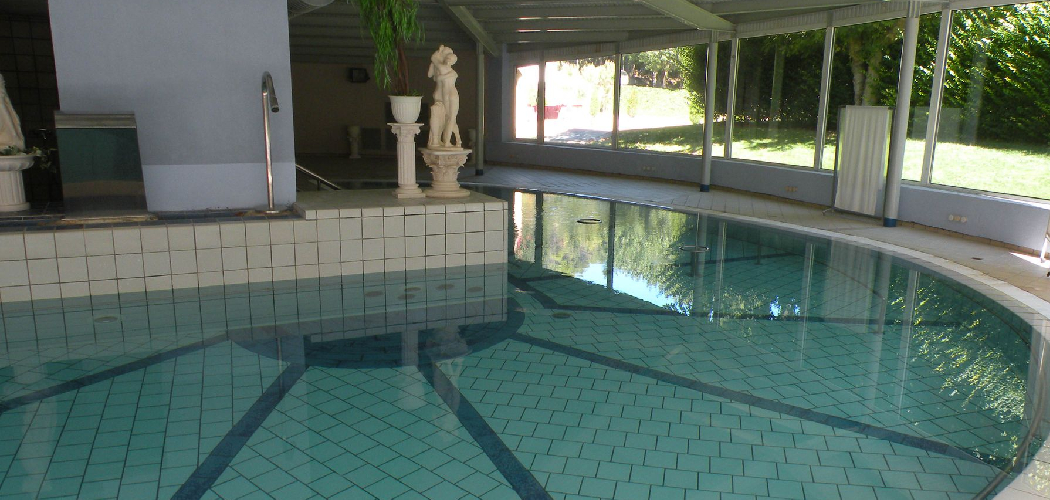Are you the happy owner of a newly-filled swimming pool? Congratulations! You’re about to experience more summer fun than ever before. But now comes one very important task—properly leveling your pool so that it lasts for years of enjoyment and relaxation.
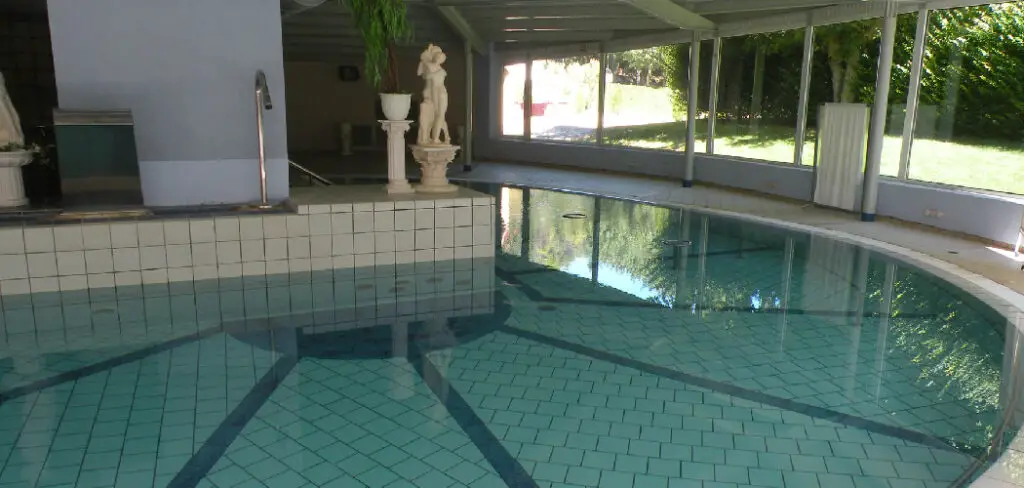
It may not seem like a difficult job, but there are definite steps to take in order to keep your pool looking great.
In this post, we’ll show you how to level a pool after it’s been filled, discuss why it’s crucial for optimal use, and provide tips on what equipment is needed. Get ready to dive into your new backyard oasis confidently, knowing that every step has been taken properly!
Can You Level a Pool After It’s Been Filled?
When it comes to readying a pool for swim season, proper leveling is an important consideration. Whether you’re installing a new above or inground swimming pool, understanding when and how to level the pool can make all the difference.
Although it can be done before filling the pool with water, some DIY-ers may want to level their pool even after it has been filled. This can be done, but it requires more caution and special attention to detail, as cavities beneath the surface of the water must be filled and adjusted according to site conditions.
Fortunately, there are specialized machines and tools that can help in this endeavor – if properly used, nicely leveled pools can be achieved regardless of whether they were evened out prior to filling or not.
Why Should You Level a Pool After It’s Been Filled?
Pool leveling is crucial when filling up any pool for the first time. By not taking into account the way your pool slopes, you run the risk of having a very dangerous body of water in your backyard.
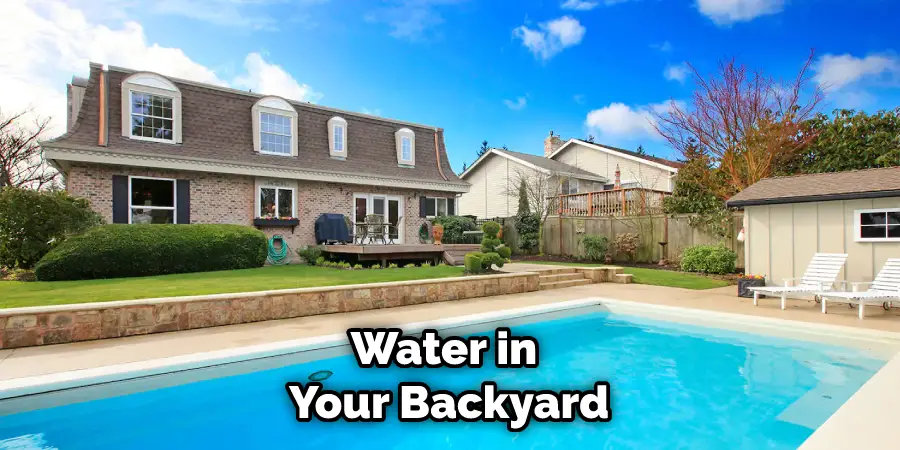
It doesn’t take long to level a pool after it’s been filled, and having perfectly even ground will ensure that it won’t leak or contaminate surrounding soil and grass with chemicals like chlorine which can be hazardous.
Doing it right from the start is key to having an enjoyable pool season without problems or accidents. So don’t skimp on this important step, and ensure that everyone using your pool is safe!
7 Steps to Follow on How to Level a Pool After It’s Been Filled
Step 1: Check the Base of Your Pool
The first step in leveling your pool is to check the base of your pool for any irregularities or dips. If you notice any areas that aren’t perfectly flat, you’ll need to fill them in with a material such as sand or concrete.
You should also use a ruler or level to ensure all sides of the pool are even and that none are lower than the others. If they are, you’ll need to add more material until all four sides are level.
Step 2: Test With Water
Once you’ve checked the base of your pool and added any necessary components, it’s time to test it out with water! Fill up a bucket with some water and slowly pour it into the shallow end of your pool.
This will help you determine if there are still any dips or irregularities present in the base of your pool. If so, repeat step one until everything is completely flat and even throughout the entire area.
Step 3: Add Support Beams
After checking for dips and filling in any irregularities with sand or concrete, it’s important to add support beams around of your pool. These beams will help keep the structure from shifting once it’s full of water and prevent further damage down the line due to uneven weight distribution when people get into or out of the pool.
Adding these beams will also provide additional stability during strong winds or heavy rains, helping protect your investment for years to come!
Step 4: Check for Uneven Areas
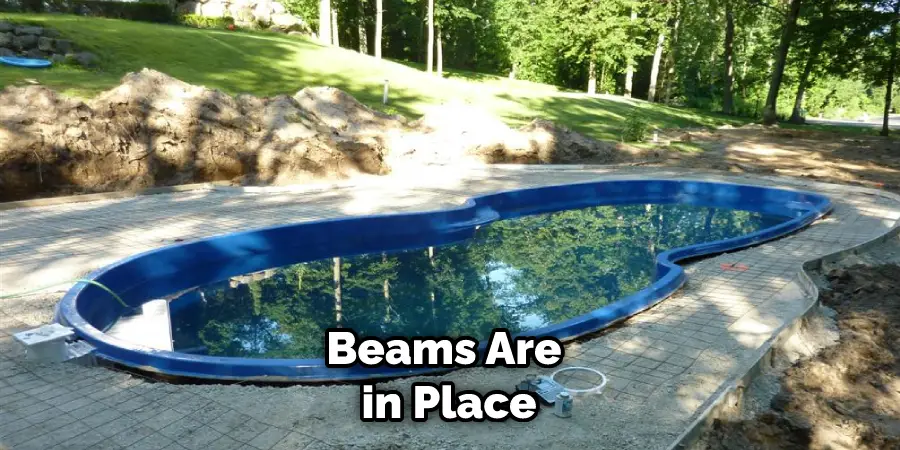
Once the support beams are in place, you’ll want to check for any uneven areas or low spots in your pool’s structure. If there are any dips or irregularities, you may need to add more sand or concrete to fill them in until everything is flat and even again. This will help ensure your pool is as stable and safe as possible once it’s filled with water.
Step 5: Add the Liner
Once everything has been checked, double-checked, and you’re satisfied that the entire base of your pool is even and level, it’s time to add the liner! This part can be tricky, as you’ll want to ensure the liner is perfectly smooth and not wrinkled.
Take your time when applying the liner to ensure it’s properly placed, and use a ruler or level if necessary to ensure everything looks how you want it.
Step 6: Fill with Water
Once your liner is in place, you can fill your pool with water. You’ll want to do this gradually and keep an eye on how the pool settles, checking for any uneven areas or irregularities. If everything looks good, you can finish filling the pool up and admire your hard work!
Step 7: Monitor Your Pool
Once your pool has been filled and leveled, the last step is to monitor it for any changes or shifts. If you notice any areas that have become uneven or are no longer level, it may be time to start over from the beginning and ensure everything is how it should be.
That’s it! You’ve now learned how to level a pool after it’s been filled. With these seven steps, you can easily keep your pool in the best shape possible and enjoy swimming for years to come! Good luck!
Things You Need to Know Before Leveling a Pool After It’s Been Filled
When you fill your pool, you may want to consider leveling it for a smoother, more consistent experience. However, before jumping in head first and starting the leveling process, you should know a few important things. First of all, it is beneficial to measure the depth of the water and check if it is the same across the entire pool.
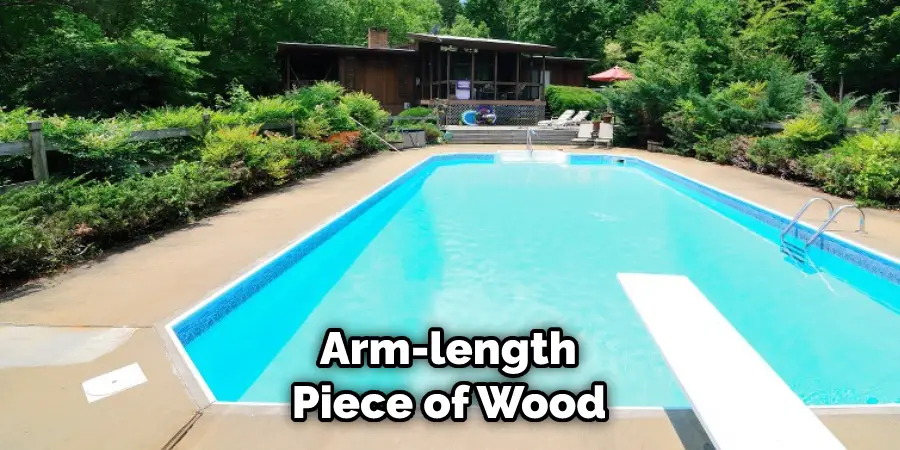
You can use a long level placed on top of an arm-length piece of wood or stiff plastic to compare levels from one side to the other easily.
It is also crucial that when installing gutters or drains around your pool that these are installed at the perfect angle in order for them to be properly functional.
Lastly, ensure that before backfilling any area around your newly leveled pool, you fill it with sand so as avoid future sinking or settling into your recently filled oasis.
Benefits of Leveling a Pool After It’s Been Filled
Swimming pools are a great way to cool off in the summer and entertain friends, but they require regular maintenance if they’re going to be safe to use. One of the essential steps to keep your pool clean and free of debris is leveling it after it has been filled with water.
Doing this not only helps control water loss but also reduces the risk of structural damage due to erosion or uneven pressure on that part of the pool. An evenly leveled pool also keeps the PH balance in check, as any imbalances can lead to problems with clarity or filtering.
Additionally, when a swimming pool is properly leveled, you will get more consistent circulation which will cut down on the presence of dirt and other pollutants that can cause harm to those who enjoy it regularly. In short, leveling a pool after it’s been filled is an important step for ensuring that it remains healthy and safe for swimmers all season long.
You Can Check It Out to Get Glass Out of a Pool
4 Common Mistakes People Make When Trying to Level a Pool After It’s Been Filled
1. Overlooking the Pool’s Filter
One of the most common mistakes people make when trying to level a pool is overlooking the pool’s filter. The filter is responsible for keeping the water clean and free of debris, so it’s important to ensure it is level. Otherwise, the water will not be able to flow through it properly and will become dirty.
2. Not Checking Pool’s pH Level
Another mistake people make is not checking the pool’s pH level before adding chemicals. The pH level measures how acidic or basic the water is. It’s important to maintain a balanced pH level in order to prevent skin and eye irritation. Adding chemicals without first checking the pH level can throw off balance and cause problems.
3. Adding Too Much Water
Another common mistake is adding too much water to the pool. This can happen if people try to fill the pool too quickly or if they don’t turn off the hose in time. Adding too much water can cause the pool to overflow and damage the surrounding area.
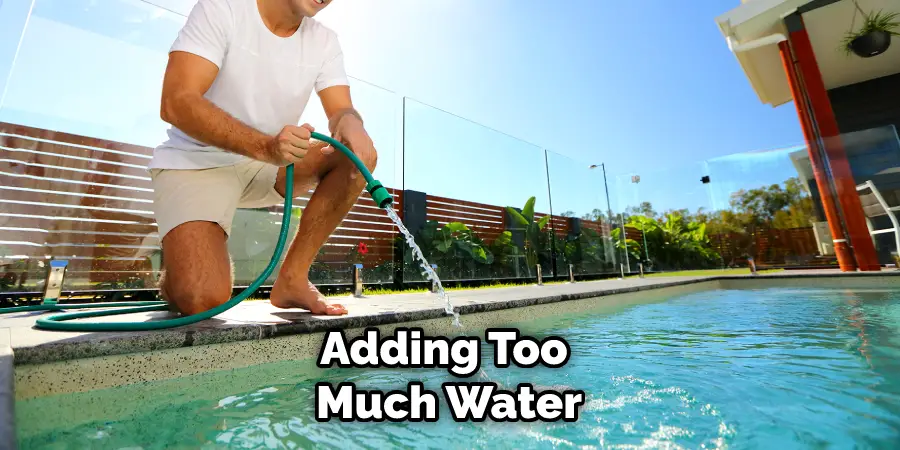
4. Not Letting the Pool Cure
Finally, another mistake people make is not letting the pool cure after it’s been filled. Curing is an important process that allows the concrete to harden and form a strong bond with the steel reinforcement rods inside. Without curing, pools are more likely to crack or leak.
Conclusion
Leveling a pool after filling is key for ensuring its longevity and safety.
By taking careful measurements before filling up a new swimming pool, adding sand or concrete material where needed, testing out with water before fully filling up, and adding support beams around its perimeter afterward – you’ll have peace of mind knowing that your swimming haven is safe and sound!
These simple steps will save you from costly repairs down the line- so don’t forget them!
Thanks for reading our post about how to level a pool after it’s been filled.
You Can Check It Out to Fill Pool with Well Water

